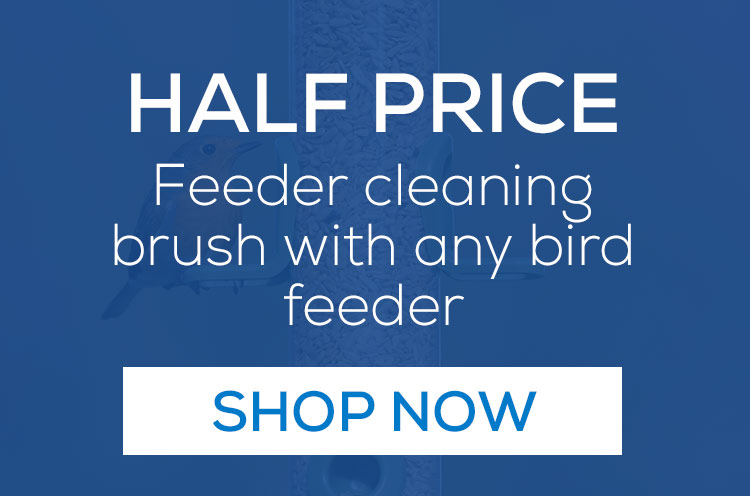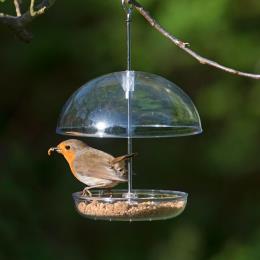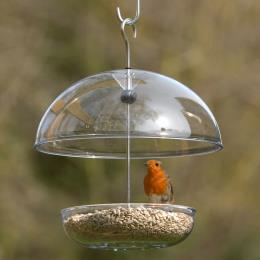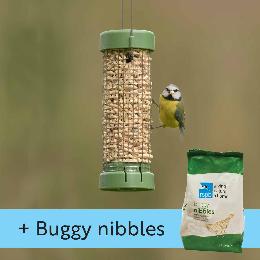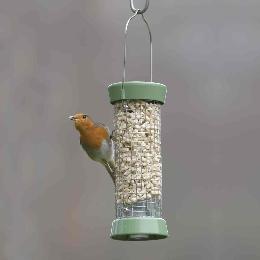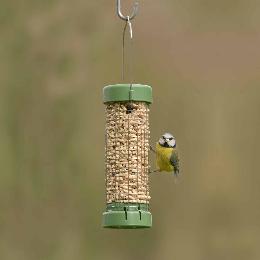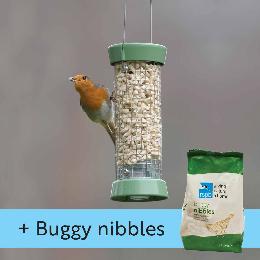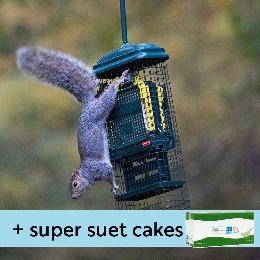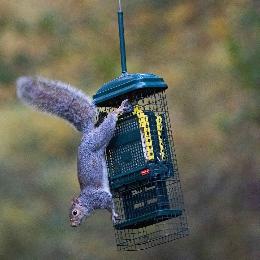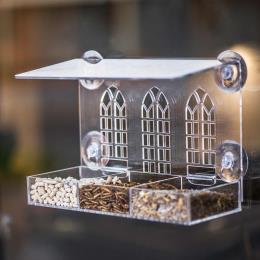Slide 1 of 1 



No-quibble free returns:
Unhappy with your item? We offer no-quibble free returns
Nature-friendly products:
Sourced through ethical and sustainable accreditations
Free delivery over £20:
£3.95 standard UK shipping, or free shipping over £20
Supporting the RSPB:
Every purchase you make supports wildlife
Suet bird feeders
Suet bird food will attract a wide range of wild birds into your garden, including many varieties of tits alongside nuthatches and wrens, so adding a suet feeder to your garden is a great option if you want to see these birds (and more) up close.
We have a range of suet bird feeders to suit every need, as well as offers for both feeders and food. We also sell fat balls, suet cakes and blocks and suet pellets to keep your suet feeders full all year round.
18 list items
Suet bird feeder FAQ
What is a suet feeder?
A suet feeder is a type of bird feeder that is designed to hold suet balls, cakes or logs. Suet is a high-fat, nutrient-rich food that is usually made from mixture of animal fat, seeds and insects although specific ingredients can vary.
Which birds do suet feeders attract?
Suet feeders will attract a variety of birds. The species you see will depend on your location, but some of the most likely visitors will be tits, nuthatches, woodpeckers and jays.
Where is the best place to hang a suet feeder?
This will ultimately depend on your garden but good guidelines to follow are making sure the feeder is visible, accessible, and close to bushes or trees. This will allow the birds to find the feeder and provide a natural environment for them to feed. Positioning feeders approximately 2m away from natural cover is ideal – close enough for birds to easily seek cover, but far enough away from a potential hiding spot for cats.
When is the best time to use a suet feeder?
Suet feeders are particularly beneficial for birds during the colder months when natural sources of food may be scarce, but they can be used year-round. Just be aware that in very hot weather the suet may soften or melt, so it may be best to put it in shaded areas during these times. Suet feeders are also valuable for birds during nesting season.
How long will suet last in the feeders?
The length of time that suet lasts in a feeder will depend on various factors such as the weather conditions and the popularity of the feeder. A good rule of thumb is to put out a small amount of food to begin with, then once you have frequent visitors you can increase the amount of food you offer, aiming for the food to be eaten within a week. Feeders should be cleaned weekly to protect your garden birds from infectious diseases.
How to clean a suet feeder?
Feeders should be cleaned weekly to protect your garden birds from infectious diseases. Dismantle the feeder and clean with a suitable disinfectant or a mild (5%) bleach solution, using a brush or scraper to remove tough dirt. Rinse after cleaning and ensure that components are dry before reassembling the feeder. Always clean feeders outside while wearing waterproof gloves.
